Explore Thai rice dishes, where each grain becomes a canvas for culinary artistry. Indulge in fragrant creations, a harmonious blend of herbs, spices, and succulent proteins. From vibrant stir-fried wonders to aromatic fried rice, every bite is a journey through Thailand's rich gastronomic landscape. Experience the balance of flavors, the play between sweet, savory, and spicy notes that define Thai cuisine. Whether it's the inviting aroma of jasmine rice or the satisfying crunch of a perfectly executed dish, Thai rice offerings promise an unforgettable dining experience, where tradition and innovation dance together on your palate.
Congee
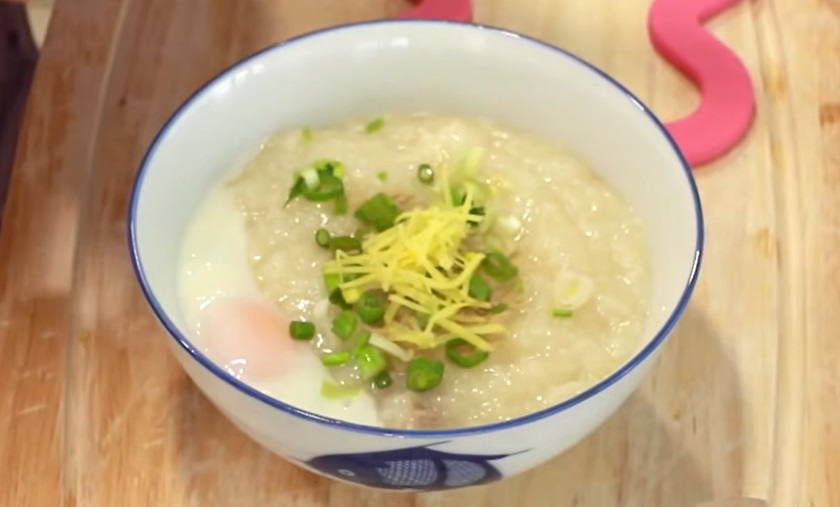
Congee, a savory rice porridge, takes on various forms globally, with its Thai rendition known as Chok or Jok. In Thai cuisine, this comforting dish is often enjoyed for breakfast, featuring rice boiled to a soft consistency. The thickness varies, akin to Western oatmeal porridge or a gruel, depending on the rice-water ratio.
Thai rice congee is typically adorned with minced pork or beef, chopped spring onions, and may include a raw or partially cooked egg. It can be optionally crowned with a donut-like pathongko, slivers of ginger, fried garlic, and zesty pickles like pickled radish. While a breakfast staple, Jok is sold throughout the day in specialty stores, offering variations in meat and toppings. The cool season in Thailand witnesses increased popularity of this dish.
Distinct from this, plain rice congee, or khao tom kui, is served at specialized eateries. Accompanied by an array of side dishes like mu phalo (pork stewed in soy sauce and five-spice powder), yam kun chiang (a salad with sliced dried Chinese sausages), and mu nam liap (minced pork fried with Chinese olives), it offers a diverse culinary experience beyond its comforting base.
Nasi Lemak
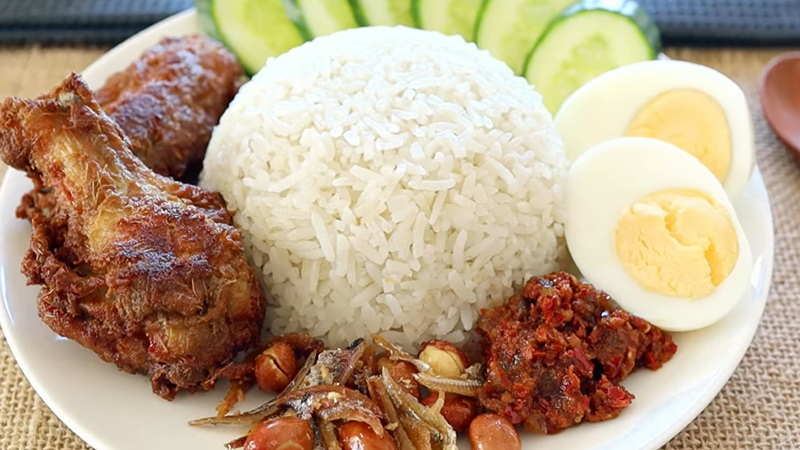
Nasi lemak, a culinary masterpiece, is a dish that epitomizes the rich and diverse flavors of Malaysian cuisine, proudly holding the title of the national dish. This beloved creation extends its influence to neighboring regions, including Southern Thailand and Singapore.
At the heart of nasi lemak is fragrant rice, luxuriously cooked in coconut milk and infused with the aromatic essence of pandan leaves. Traditionally, it is elegantly presented wrapped in banana leaves, adding a touch of natural charm to its visual appeal. The dish is incomplete without its crowning glory – a hot and spicy sambal sauce that tantalizes the taste buds with a perfect balance of heat and flavor.
The ensemble of nasi lemak extends beyond the rice and sambal, featuring an array of delightful accompaniments. Fresh cucumber slices, small fried anchovies, and roasted peanuts add texture and depth to each bite. Hard-boiled or fried eggs provide a protein-rich component, while more substantial variations may include mouthwatering additions like fried chicken, chili cuttlefish, small fried fish, cockles, and beef stewed in coconut milk and spices.
As a nod to tradition, nasi lemak embodies a harmonious blend of spicy elements, creating a culinary symphony that resonates with food enthusiasts worldwide.
Thai Fried Rice
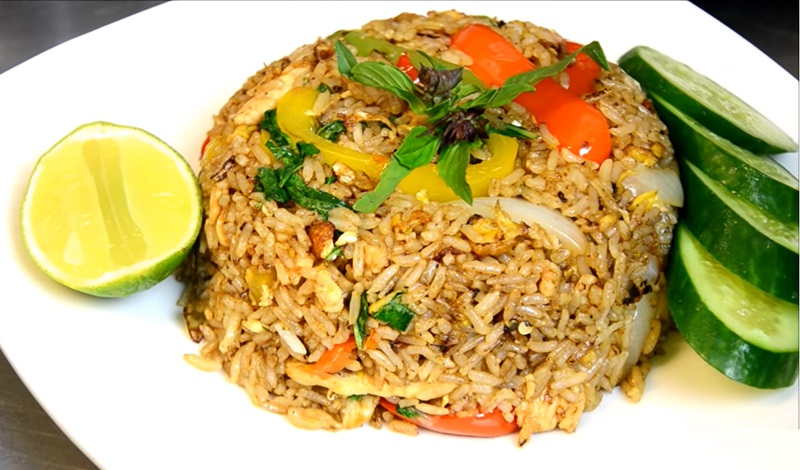
Thai fried rice, a distinctive dish from central Thai cuisine, showcases a flavorful blend of ingredients stir-fried to perfection. In Thai, "khao" translates to rice, while "phat" denotes stir-frying. What sets this dish apart from its Chinese counterpart is the use of fragrant Thai jasmine rice instead of regular long-grain rice.
Typically featuring a medley of proteins such as shrimp, chicken, and crab, Thai fried rice incorporates garlic, egg, onions, and occasionally tomatoes for a vibrant and savory profile. The seasonings, a harmonious mix of sugar, salt, soy sauce, and the ubiquitous nampla (fish sauce), are stirred into the rice and other components. Once prepared, the dish is elegantly plated and served with accompaniments like lime, tomato slices, cucumber slices, and garnishes such as coriander and sprigs of green onion. For an extra kick, phrik nampla, chopped garlic, and sugar, is offered alongside. Thai fried rice embodies the essence of Thai culinary expertise, blending diverse flavors into a delightful and satisfying dish, appreciated with every flavorful bite.
Coconut Rice
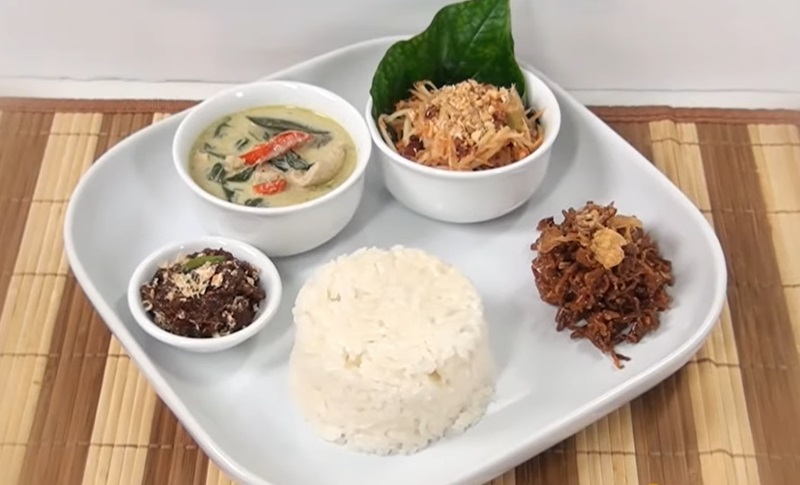
Coconut rice, a delightful fusion of white rice and coconut milk or flakes, graces culinary traditions worldwide, thriving in tropical climates across Southeast Asia, the Indian subcontinent, West Africa, East Africa, South America, Central America, the Caribbean, and Oceania. The ubiquity of coconut and rice plants in these regions has birthed diverse renditions of coconut rice in various cultures.
In Thai cuisine, sweet coconut rice emerges as a popular dessert or sweet snack, featuring coconut milk, salt, glutinous rice, sugar, and water. A celebrated pairing involves serving it alongside slices of ripe mango, complemented by an additional dollop of coconut cream. Beyond mango season, this versatile dish harmonizes with other fruits or semi-sweet offerings. Notable variations include khao tom mat, where sweet banana is steamed within sticky rice encased in a banana leaf, khao lam, a preparation steamed inside bamboo, and khao niao kaeo, a vibrant and intensely sweet concoction of glutinous rice, coconut milk, and ample sugar, often adorned in shades of pink or green.
Coconut rice, with its global adaptations, epitomizes the harmonious marriage of coconut's richness and rice's versatility across the world's diverse culinary landscapes.
American Fried Rice
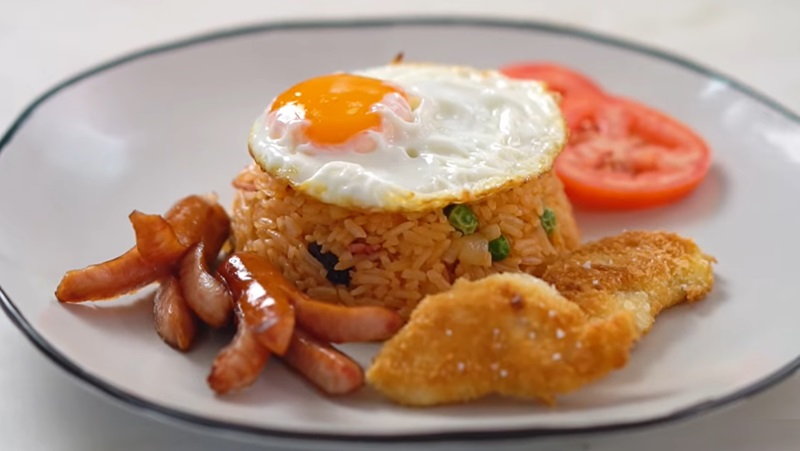
American fried rice is a distinctive Thai dish that seamlessly blends the flavors of traditional fried rice with American-inspired ingredients. This flavorful creation features staples like ham, fried chicken, raisins, sausages, and ketchup, infusing the classic Thai rice preparation with a uniquely Western twist. The optional addition of ingredients such as pineapples and croutons further enhances the dish's complexity and appeal.
What sets American fried rice apart is its innovative fusion of culinary elements from both Thai and American cuisines, resulting in a harmonious blend of savory, sweet, and tangy notes. The inclusion of familiar American side ingredients adds a delightful twist to the traditional Thai fried rice, offering a multicultural culinary experience that caters to diverse palates. This cross-cultural dish showcases the creativity and adaptability of Thai cuisine, seamlessly incorporating global influences to create a satisfying and flavorful ensemble that appeals to a wide range of tastes.
Khao Kha Mu
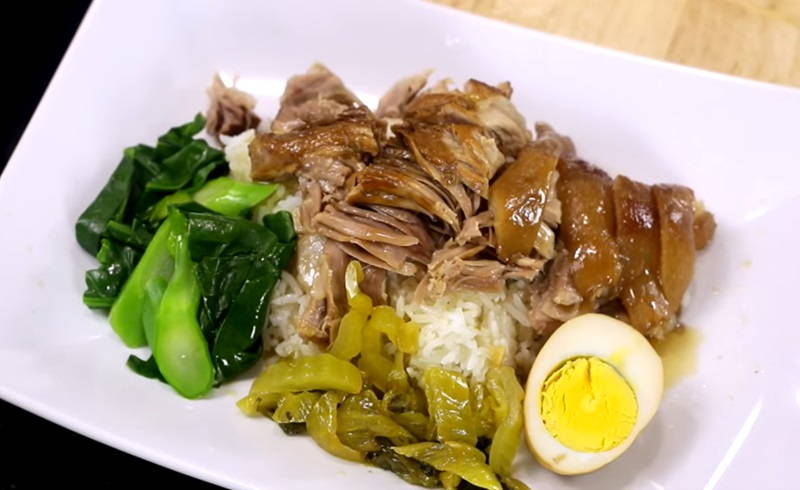
Khao kha mu, a beloved Thai dish, reflects a harmonious fusion of flavors influenced by Chinese Teochew cuisine. This individual delicacy features stewed pig's trotter immersed in a richly seasoned, condensed hot pottage, occasionally enhanced with elements like cocoa powder or boiled peanuts. The succulent trotter is then delicately sliced and elegantly arranged atop steamed rice.
Served with half-spiced corned eggs, small portions of pickled mustard greens, and sometimes blanched Chinese broccoli, the dish captivates the palate with its intricate blend of textures and tastes. The pungent aroma of cloves of garlic and vibrant notes of fresh bird's eye chili peppers complement the dish, elevating its flavor profile with a lively and dynamic kick on the side. Occasionally enjoyed with a clear broth soup, khao kha mu offers a culinary experience that spans from humble street stalls and food courts in department stores to upscale restaurants. The accompanying dipping sauce, crafted from garlic, yellow chili peppers, limeade, granulated salt, and vinegar, adds the perfect finishing touch to this widely accessible and flavorsome Thai gastronomic delight.
Khao Mu Daeng
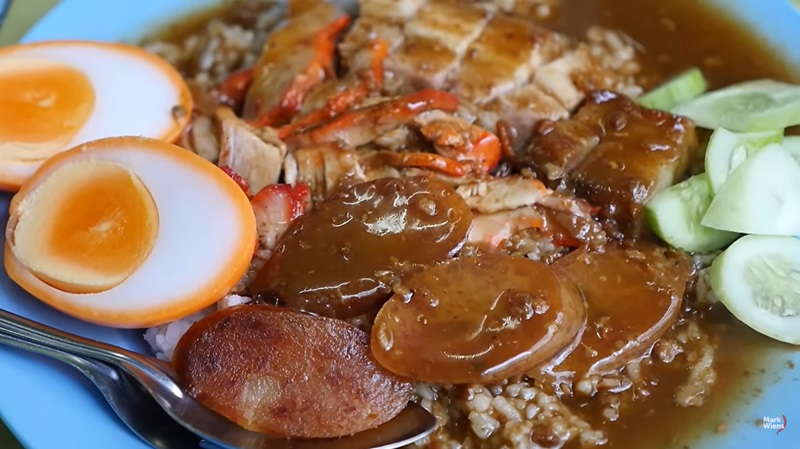
Khao mu daeng, a Thai culinary creation, showcases the local adaptation of Chinese char siew with rice. This individual dish features steamed rice as its base, adorned with an array of tantalizing elements. The star of the show is the red pork, accompanied by half-boiled duck eggs, kun chiang, and crispy fried streaky pork. Green shallots and sliced cucumbers add a refreshing crunch, while a drizzle of sweet bean gravy ties everything together.
To enhance the flavor experience, khao mu daeng is typically served with black soy sauce and chili vinegar dipping sauces. For those seeking an extra layer of heat, nam phrik phao, can be added to elevate the dish even further.
For a slight variation, khao mu krop omits the red pork while retaining all the other flavorful components, offering a delightful alternative to those craving the essence of khao mu daeng without the inclusion of red pork. This dish epitomizes the fusion of Chinese and Thai culinary traditions, resulting in a harmonious blend of flavors and textures that tantalize the taste buds.
Suman
-1702280639.jpg)
Suman, a delectable rice cake with deep Filipino roots, emerges as a culinary gem in the vibrant tapestry of Philippine desserts. Crafted from glutinous rice and enveloped in the embrace of coconut milk, this delicacy is a testament to the rich flavors inherent in traditional Filipino cuisine.
The process involves skillfully cooking the glutinous rice in coconut milk, a marriage that imparts a luxurious creaminess to the suman. To preserve and enhance its distinctive taste, suman is carefully wrapped in coconut leaves, banana leaves, or leaves from the buri palm or buli, creating a charming presentation for the steaming process.
The suman experience is further enriched by diverse serving methods. Whether dusted with sugar or adorned with latik, a sweet coconut syrup, each variation adds its unique touch to the culinary narrative. A noteworthy variant replaces glutinous rice with cassava, introducing a delightful twist to the traditional recipe.
Suman finds a kindred spirit in Thailand, where it goes by the name loogpang, highlighting the cultural interconnectedness of Southeast Asian cuisines. Suman stands as a cherished symbol of Filipino culinary artistry, encapsulating the essence of local ingredients, craftsmanship, and the heartwarming spirit of shared traditions.
Sticky Rice in Bamboo
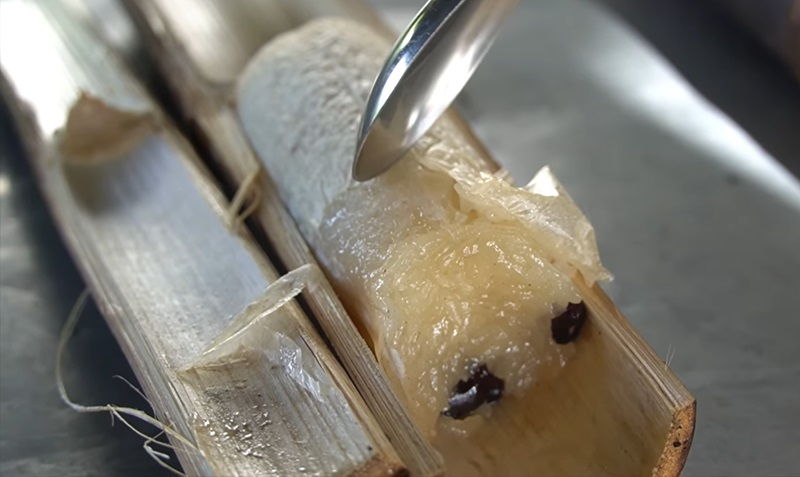
Sticky rice in bamboo, a prevalent culinary delight in Southeast Asia, is crafted by roasting glutinous rice within meticulously prepared bamboo sections of various diameters and lengths. This versatile dish effortlessly transitions between savory and sweet variations, showcasing its adaptability across diverse palates.
As a savory offering, sticky rice in bamboo pairs well with an array of delectable accompaniments, such as savory meats or flavorful curries. The bamboo imparts a distinctive aroma and enhances the rice's texture during the roasting process, creating a unique and memorable dining experience.
Conversely, the sweet rendition of this dish transforms it into a delightful dessert. Here, the sticky rice may be combined with ingredients like coconut milk, sugar, and even aromatic pandan leaves, resulting in a luscious and flavorful treat. The bamboo infusion adds an earthy nuance to the sweet version, elevating it to a culinary delight that caters to those with a penchant for both savory and sweet indulgences. Sticky rice in bamboo stands as a testament to the culinary creativity embedded in Southeast Asian gastronomy, captivating taste buds with its dual identity and diverse appeal.



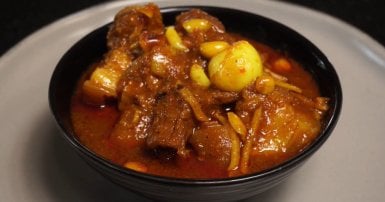
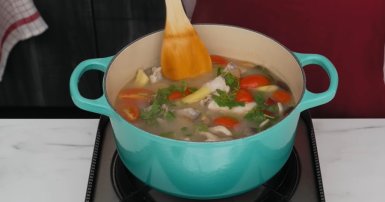
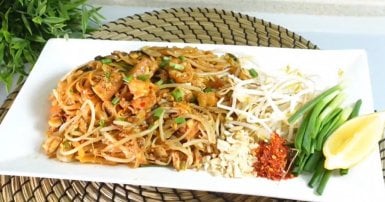

-1709813013.jpg)


